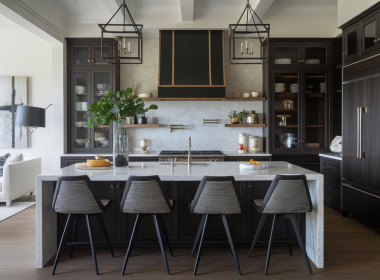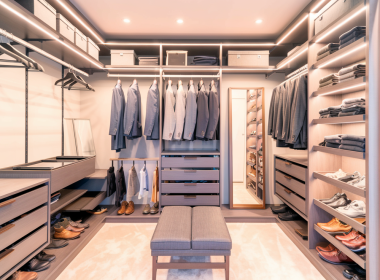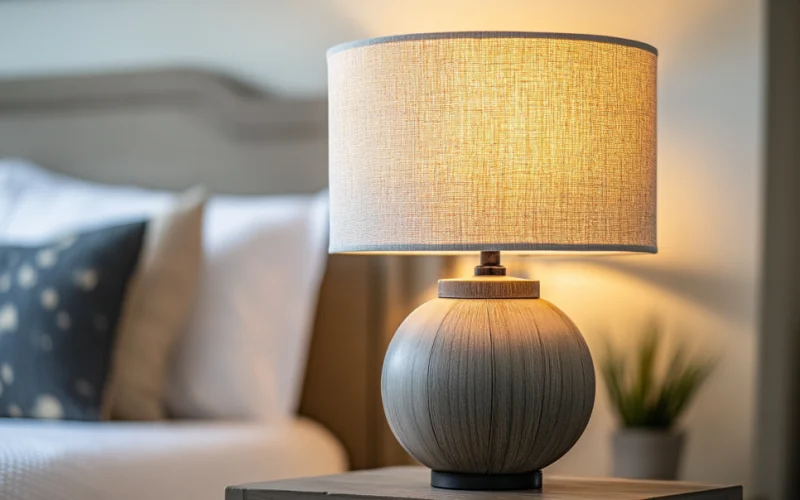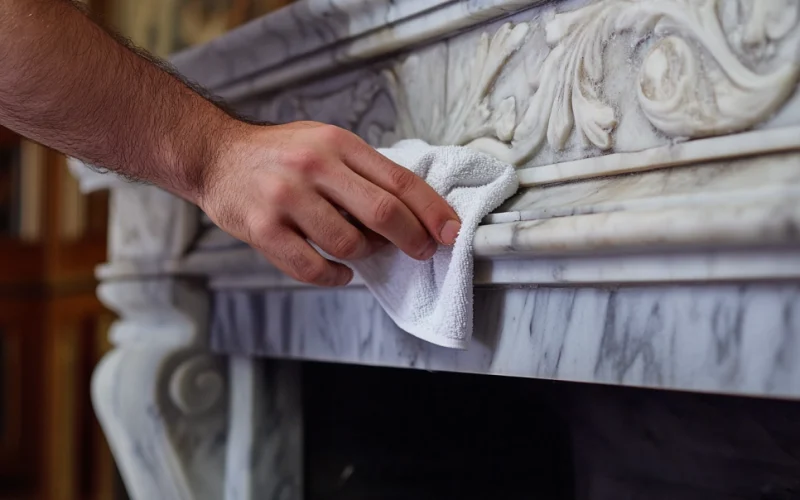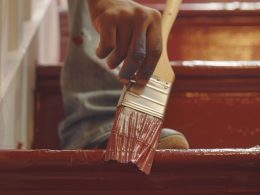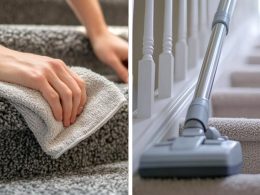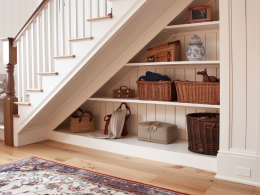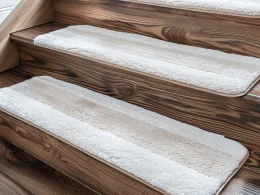Stair safety is crucial, yet many homeowners overlook the importance of proper stair nosing.
This small but vital component enhances the look of your stairs and plays a key role in preventing slips and falls.
With so many options available, choosing the right stair nosing can be overwhelming.
I’m here to simplify this process for you.
In this post, I’ll explain the ten most common types of stair nosing and their unique features and benefits.
You’ll learn which materials work best for different settings, how to install them correctly, and tips for maintaining them long-term.
By the end of this article, you’ll have a clear understanding of stair-nosing options and be able to make an informed decision for your home or business.
Let’s step into the world of stair-nosing together!
Types of Stair Nosing
Before we discuss the specific types, let’s briefly discuss stair nosing and why it matters.
Stair nosing is the edge part of a step, designed to protect the stairs and improve safety.
1. Bullnose Nosing
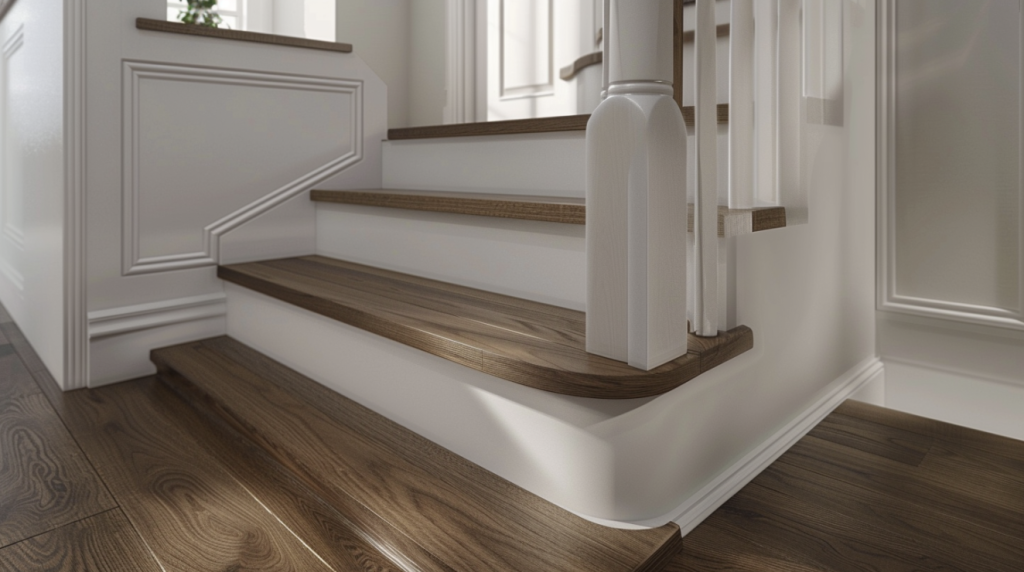
Bullnose nosing is popular for many homeowners due to its smooth, rounded edge.
This design isn’t just about looks – it’s a smart safety feature, too.
The curved profile helps prevent trips by eliminating sharp corners that could catch your foot.
I’ve seen bullnose nosing used often in homes, especially on wooden staircases.
It gives stairs a softer, more finished look that blends well with various decor styles.
The rounded edge also makes cleaning easier since there are no tight corners where dust can collect.
One thing I like about bullnose-nosing is how it can make stairs feel more inviting.
The gentle curve seems to guide your foot naturally onto each step.
It’s particularly good for homes with young children or older adults, as it provides extra safety without looking institutional.
While bullnose-nosing is great for many situations, it’s not always the best choice for high-traffic commercial areas.
In those cases, you might need something more heavy-duty.
But for most homes, it’s a solid, attractive option that balances safety and style nicely.
2. Square Nosing
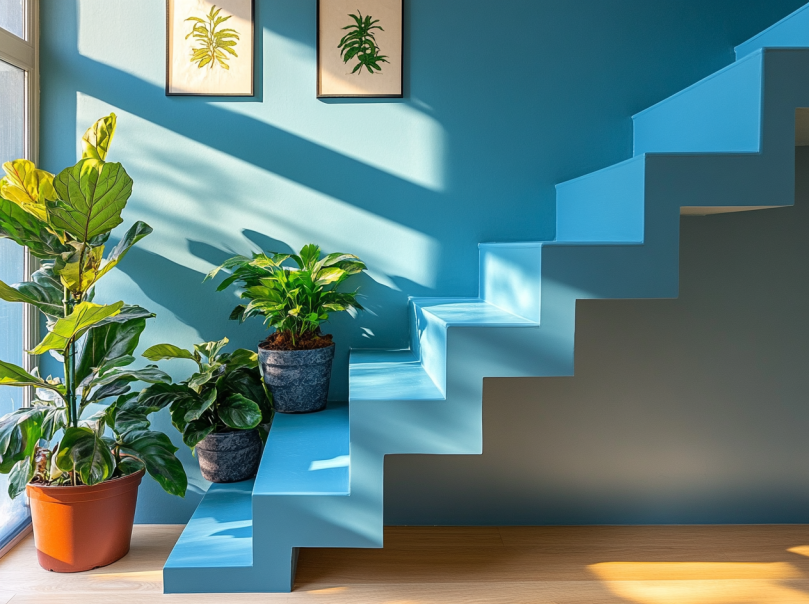
Square nosing offers a clean, crisp look that’s become increasingly popular in modern homes and offices.
As the name suggests, it features a sharp 90-degree angle at the edge of the step.
I’ve noticed that square nosing shines in contemporary interiors.
Its straight lines complement the minimalist aesthetic that many people are going for these days.
For a sleek, no-nonsense look, square-nosing could be just the ticket.
Remember that while square nosing looks great, it doesn’t offer the same level of slip resistance as some other types.
I often recommend pairing it with a non-slip strip for safety, especially in busy areas or homes with kids or older adults.
Installation of square nosing can be a bit trickier than rounded options.
You must ensure your cuts are precise to get that perfect sharp edge.
But when it’s done right, the result is a staircase that looks crisp and professional.
Square nosing isn’t just about looks, though.
The sharp edge can help define each step more clearly, which can be helpful in low-light conditions.
Remember to factor in the slightly higher risk of stubbed toes when deciding!
3. Lipped Nosing
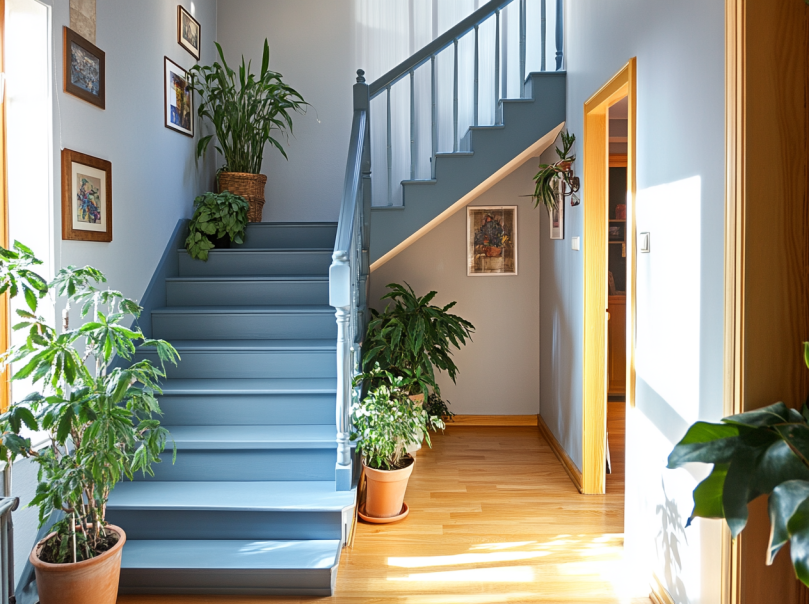
Lipped nosing is a practical and safety-focused option that I often recommend for busy staircases.
As the name suggests, this nosing type has a small lip or overhang extending slightly over the riser below.
The main benefit of lipped nosing is the extra grip it provides.
That little overhang gives your foot more surface area to land on as you descend the stairs.
I’ve found this especially helpful in places like schools or office buildings where people might be hurrying and not paying attention to each step.
Another advantage is that lipped nosing can help protect the edge of your stairs from wear and tear.
The lip takes the brunt of foot traffic, which can help your stairs look better for longer.
This is particularly useful if you have carpeted stairs—the nosing can prevent that annoying fraying at the edge of each step.
Installation can be more complex with lipped nosing than simpler designs.
You need to make sure there’s enough clearance for the lip and that it’s securely attached.
But in my experience, the extra effort is worth it for the added safety and durability.
Remember that while lipped nosing is great for many situations, it might not be the best choice if you’re going for a super-sleek, modern look.
It’s more about function than fashion, though it can still look quite nice.
4. Metal Nosing

Metal nosing is a top choice when durability is a priority.
I’ve seen it used extensively in commercial spaces, and for good reason – it can take a beating.
One of the things I like about metal nosing is its versatility.
You can find it in aluminum, brass, stainless steel, and other metals.
Each has its benefits. Aluminum is lightweight and resistant to corrosion.
Brass offers a classic, elegant look.
Stainless steel is incredibly tough and works well in industrial settings.
The longevity of metal nosing is impressive.
I’ve been in buildings where the metal nosing has been in place for decades and still looks great.
This makes it a cost-effective option in the long run despite a higher upfront cost than other materials.
Another advantage is that metal nosing can be customized with non-slip inserts or textures.
This is crucial for safety, especially in public spaces or areas that might get wet.
One thing to remember is that metal nosing can be noisy, especially on wooden stairs.
If you’re using it in a home, you might want to consider adding some sound-dampening measures underneath.
Installation of metal nosing requires some skill.
It’s often screwed or bolted into place, which means you need to be careful not to damage the stair itself.
But when installed correctly, it provides a secure, long-lasting solution for protecting your stairs.
5. Rubber Nosing
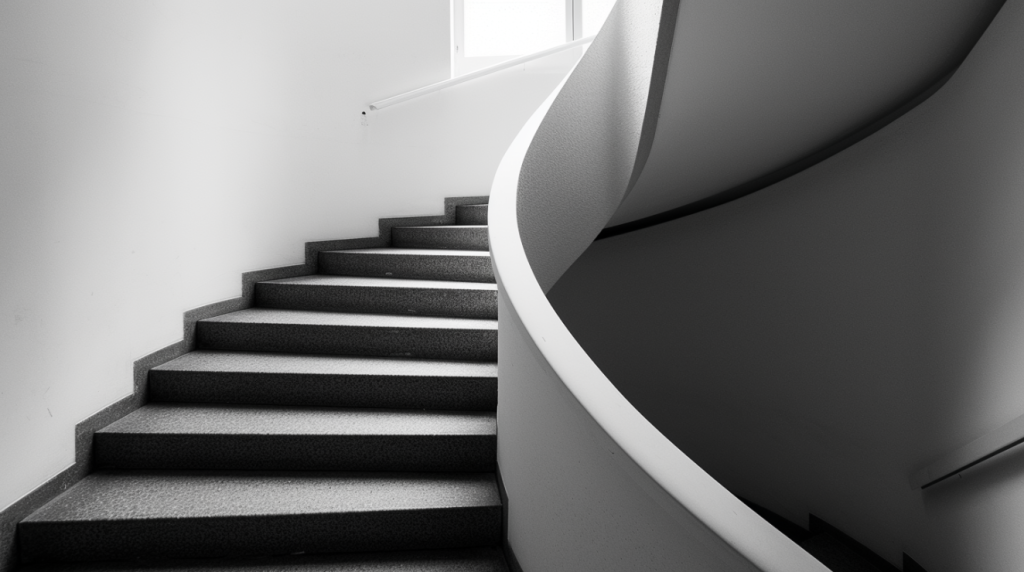
Rubber nosing is a practical choice I often recommend for areas where safety is a top priority.
It’s especially popular in industrial and commercial settings, but I’ve also seen it used effectively in some residential applications.
The main selling point of rubber nosing is its slip resistance.
Rubber provides good traction even when wet, which can be a lifesaver in busy stairways.
I’ve walked on rubber nosing in rainy conditions, and the grip is noticeably better than other materials.
Another big plus is how easy rubber nosing is to install and maintain.
You can often glue it down, which makes it a good option for DIY projects.
Cleaning is usually as simple as a quick sweep or mop.
This ease of care is why many building managers prefer it for high-traffic areas.
Rubber nosing also has some sound-dampening properties.
Switching to rubber nosing can help reduce the clatter of footsteps if you have a noisy staircase.
Remember that while rubber is durable, it may not last as long as metal in extremely high-traffic areas.
It can also fade or discolor over time if exposed to strong sunlight.
Rubber nosing comes in various colors and textures, so you can usually find something that fits your aesthetic needs.
While it might not have the sleek look of metal or the classic appeal of wood, its practical benefits make it a solid choice for many situations.
6. Carpet Nosing

Carpet nosing is a special type made for carpeted stairs.
I’ve used it in many home installations, and it’s a great way to finish carpeted steps neatly.
The main job of carpet nosing is to protect the edge of your carpet where it meets the nose of the stairs.
Without it, this area can fray or wear out quickly, especially on busy staircases.
The nosing provides a smooth transition between the tread and the riser, which looks good and helps prevent tripping.
One thing I like about carpet nosing is how it blends in with the rest of the stairs.
You can get it in different colors to match your carpet so it doesn’t stand out or break the visual flow of your staircase.
This can make your stairs look more polished and put together.
Installing carpet nosing can be a bit tricky if you’re not used to working with carpet.
You must ensure the carpet is trimmed correctly and the nosing is securely attached.
But once it’s in place, it doesn’t require much maintenance beyond regular vacuuming.
The soft edge of carpet nosing adds an extra safety element, especially for homes with young kids or older adults.
It’s not as hard as metal or wood nosing, so the impact if someone trips might be gentler.
Remember, while carpet nosing is great for carpeted stairs, it’s unsuitable for bare wood or tiled stairs.
You’d need to look at other options we’ve discussed.
7. Wood Nosing
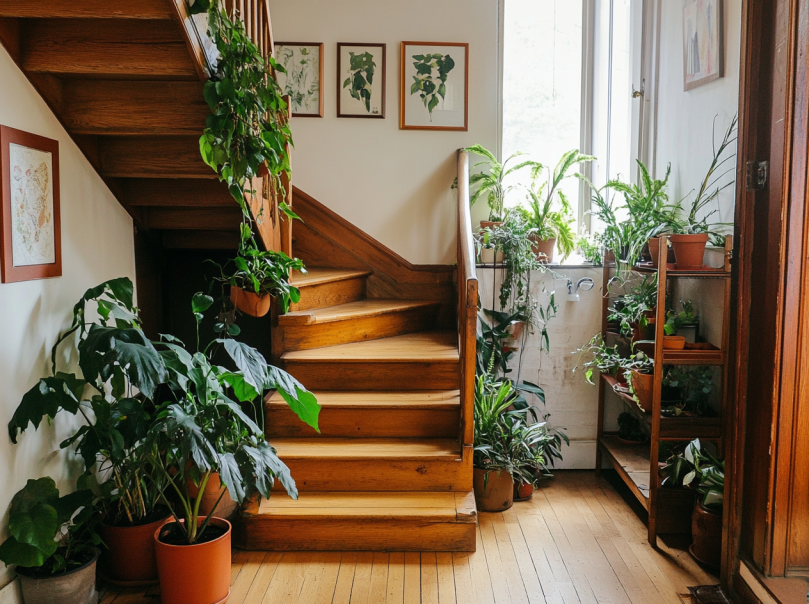
Wood nosing is a classic choice that I often recommend for homes with wooden staircases.
It’s a great way to maintain a cohesive look while adding protection to your stairs.
One of the best things about wood nosing is how well it blends with wooden stairs.
You can match the wood type and grain to your existing stairs, making the nosing almost invisible.
This creates a smooth, seamless appearance that many homeowners love.
I find wood nosing to be incredibly versatile.
You can stain it to match your stairs exactly or paint it for a contrasting look.
This flexibility lets you customize your staircase to fit your home’s style perfectly.
Installing wood nosing takes some skill, especially if you want the grain to match up nicely.
But when it’s done right, the results can be stunning.
I’ve seen wooden staircases with well-matched noses that look like works of art.
Durability can vary depending on the wood type and the traffic your stairs receive.
Harder woods like oak or maple tend to hold up better than softer woods.
Wood nosing can last for many years with proper care and occasional refinishing.
One thing to remember is that wood nosing isn’t naturally slip-resistant. If safety is a big concern, you might want to add a non-slip strip or consider a different material.
But for many homes, especially those going for a traditional or rustic look, wood nosing is hard to beat for its classic, elegant appearance.
8. Vinyl Nosing
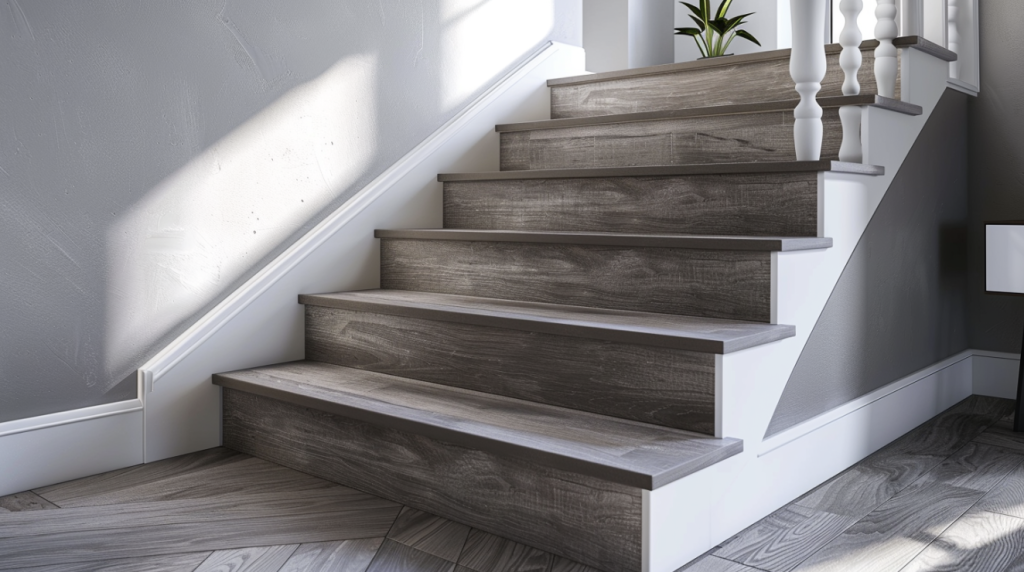
Vinyl nosing is a popular choice that I often suggest for folks looking for a budget-friendly option that doesn’t skimp on quality.
It’s become increasingly common in both homes and businesses.
One of the biggest perks of vinyl nosing is its affordability.
Vinyl is a great solution if you’re working with a tight budget but still want to protect your stairs.
Despite its lower cost, it’s surprisingly durable and can withstand a fair amount of foot traffic.
I’m always impressed by the variety of colors and patterns available in vinyl nosing.
You can find options that mimic wood or metal or use bold colors to make a statement.
This versatility lets you easily match your decor or create an eye-catching contrast.
Installing vinyl nosing is usually pretty straightforward.
Many types come with a peel-and-stick backing, making it a good choice for DIY projects.
If you’re handy with basic tools, you can often install vinyl nosing yourself without needing to call in a professional.
Cleaning vinyl nosing is a breeze.
A quick wipe with a damp cloth is usually all it takes to keep it looking good.
This easy maintenance is why it’s popular in busy households and commercial spaces.
While vinyl is durable, it may not last as long as harder materials like metal in high-traffic areas.
It can also be prone to scratching or scuffing over time.
However, its affordability, ease of installation, and low maintenance make it a solid choice in many situations.
9. Laminate Nosing
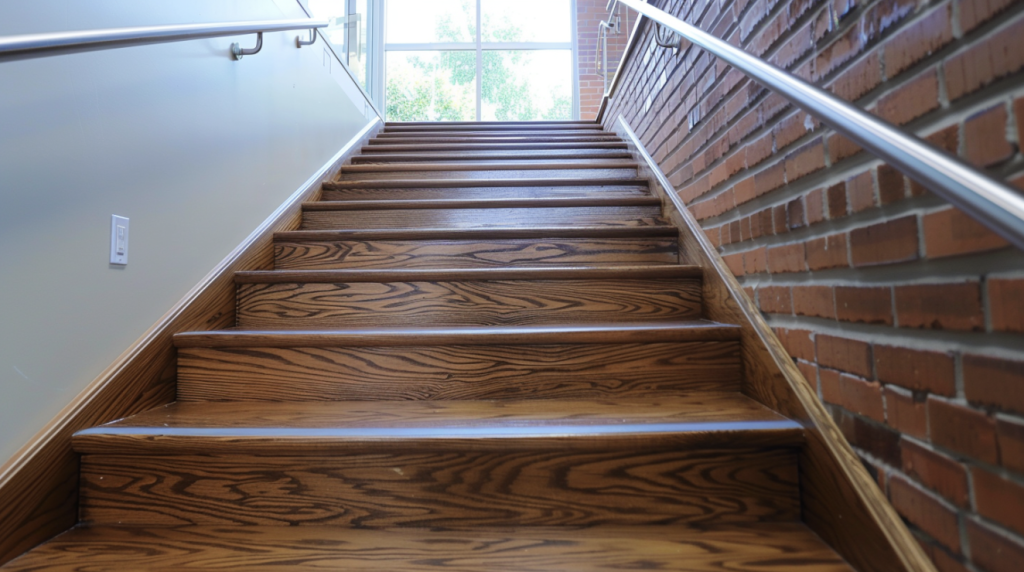
Laminate nosing is a great option that I often recommend for stairs with laminate flooring.
It’s designed to seamlessly blend with your laminate floors, creating a cohesive look throughout your space.
One of the things I like about laminate nosing is how well it matches laminate flooring.
You can usually find noses identical to your floor, creating a smooth, unified appearance.
This is especially nice if you’re going for a clean, modern look in your home.
Durability is another strong point for laminate nosing.
It’s made to withstand regular foot traffic and resist scratches and scuffs.
I’ve seen laminate nosing in busy homes that still look good after years of use.
Maintenance is pretty simple with laminate nosing.
You can usually clean it with the same methods you use for your laminate floors – a quick sweep or damp mop is often all it needs.
This ease of care is a big plus for busy households.
Like vinyl, laminate nosing comes in various designs and colors.
Options mimic wood, stone, or even metallic finishes.
This variety lets you match your nosing not just to your floors but to your overall decor style.
Installation can be trickier than other types, as you must ensure it fits perfectly with your laminate flooring.
However, many laminate nosing products are designed for relatively easy installation, often using a click-lock system similar to laminate flooring.
While laminate nosing is great for matching laminate floors, it might not be the best choice for stairs with extremely heavy traffic or prone to moisture.
In those cases, you might want to consider a more heavy-duty option.
But for most homes with laminate flooring, it’s an excellent way to extend the look of your floors onto your stairs.
10. LED Nosing
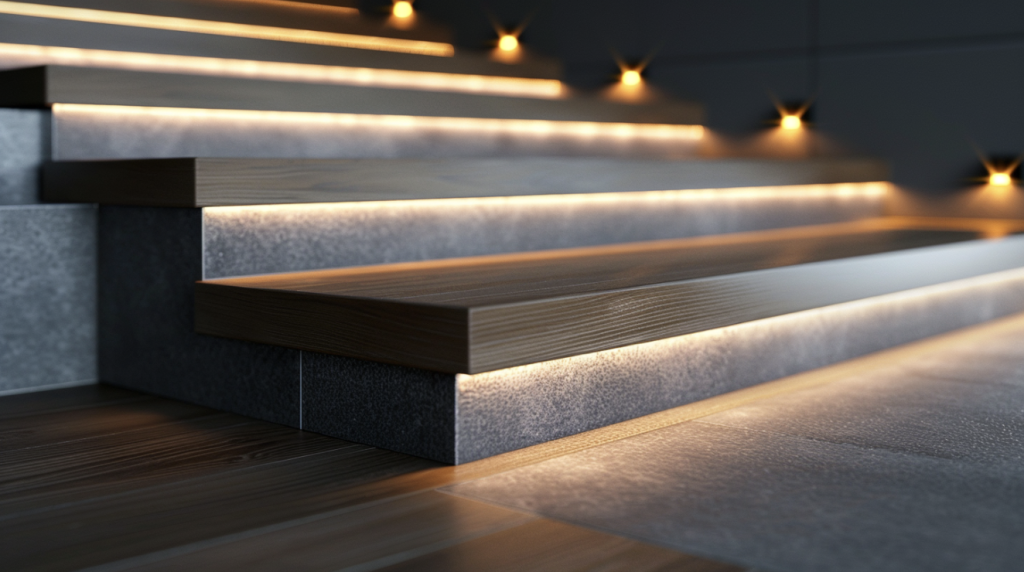
LED nosing is a modern option I’m seeing increasingly in trendy homes and commercial spaces.
It’s a clever way to combine safety and style, adding a touch of high-tech flair to your stairs.
Of course, the standout feature of LED nosing is the built-in lighting.
These tiny LED lights are embedded in the nosing, creating a soft glow that outlines each step.
I’ve installed these in home theaters, and they look amazing—the subtle lighting helps people navigate in the dark without distraction.
Safety is a big plus with LED nosing.
The illuminated edge makes each step visible, even in low-light conditions.
This can help prevent trips and falls, especially for older adults or in homes with young children.
From a design standpoint, LED nosing can add a wow factor to your stairs.
You can often choose different colors or even color-changing LEDs to match your decor or set a specific mood.
I’ve seen creative uses in modern homes and upscale bars or restaurants.
Installation can be more complex than standard nosing, as you must deal with wiring and power sources.
It’s usually a job best left to professionals unless you’re very handy with electrical work.
One thing to keep in mind is the ongoing energy use.
While LEDs are energy-efficient, they do use some electricity.
However, many models now come with motion sensors, so they only light up when someone’s using the stairs.
Durability can vary depending on the quality of the product.
Higher-end LED nosings can last for years, but cheaper options might have issues with lights burning out or water damage.
If you’re going this route, it’s worth investing in a good-quality product.
LED nosing isn’t for everyone – it might seem too flashy for more traditional homes.
But it’s a unique and functional option for those looking to add a modern touch and improve stair safety.
Key Considerations Before Choosing Stair Nosing
When choosing stair nosing, there are several important factors to remember.
Let’s break them down:
1. Material
The material you choose can greatly affect how your stairs look and function.
I always advise my clients to think about three main things:
- Durability: How much traffic will your stairs get? You might want to use tougher materials like metal or heavy-duty rubber for busy households or commercial spaces.
- Maintenance: Consider how much time you’re willing to spend on upkeep. Some materials, like vinyl or laminate, are low-maintenance, while others, like wood, might need more regular care.
- Aesthetics: The look of your nose can impact the overall appearance of your stairs. Think about whether you want the nosing to blend in or stand out.
2. Installation
This is a crucial factor that’s often overlooked.
Here’s what to consider:
- Ease of installation: Some types, like peel-and-stick vinyl, are relatively easy to install. Others, like metal or LED nosing, might require professional help.
- Compatibility: Make sure the nosing you choose matches your existing stairs. For example, carpet nosing will not work on bare wood stairs.
3. Safety
This should be a top priority, especially in homes with young children or older adults.
Look for:
- Non-slip surfaces: Many nosing types have textured or non-slip finishes. This is particularly important for stairs that might get wet.
- Visibility: Consider options that enhance visibility in low-light areas, like contrasting colors or LED lighting.
4. Style
Your stairs are a part of your home’s overall look, so the nosing should fit in.
Think about:
- Matching your decor: Choose a nosing that complements your home’s style. You might go with sleek metal or LED options for a modern look. For a more traditional feel, wood or carpet nosing might be better.
- Color coordination: Many nosing types come in various colors. You can match your stairs exactly or choose a contrasting look for added safety and style. Remember, the right nosing can enhance your stairs’ safety and appearance.
It’s worth taking the time to consider all these factors to find the best option for your specific needs.
Conclusion
Choosing the right stair nosing is more than just a finishing touch—it’s a key element in your staircase’s safety and style.
We’ve explored ten common types, each with strengths and ideal applications.
From the classic elegance of wood to the modern flair of LED nosing, there’s an option to suit every need and preference.
Remember, the best choice depends on your specific situation.
Consider the material, installation requirements, safety features, and overall style that will work best in your space.
Don’t hesitate to consult with a professional if you’re unsure.
Properly selected and installed stair nosing can prevent accidents, enhance the look of your stairs, and even add value to your property.
So take your time, weigh your options, and choose the nosing that will serve you well for years.
Your perfect staircase is just a few steps away!


